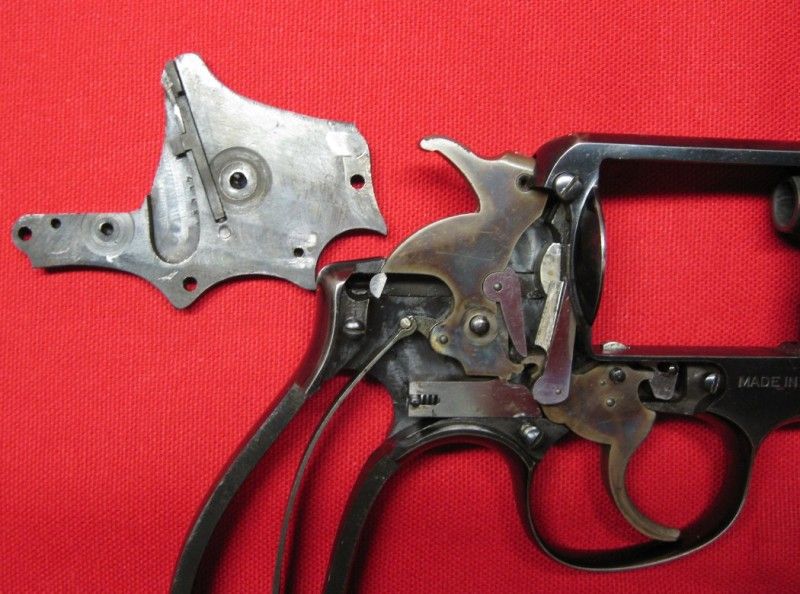I am sure it is not the right way to do it. Just wondering what adverse consequences backing out the screw would cause. Will it break anything, or cause stacking?
Howdy Again
The problem with loosening the strain screw to adjust hammer spring strength is that if you loosen it too much, when you cock the hammer the spring will interfere with the frame. The hammer will suddenly get very stiff. Trust me on this. And without the screw being locked down, it can back out.
Rebound spring does more than resetting the trigger, at least so in newer designs. It also rebounds the hammer so that the safety bar can slip between the hammer and the frame.
Yes, I am quite aware that the Rebound Slide also wedges the hammer back, I just didn't want to make my answer too complicated. Rebound Slides have been doing that since 1905. If you look carefully at my photos you can see the hump on the top of the Rebound Slide forcing the hammer back slightly.
The proper name for the 'safety bar' is the Hammer Block. It is in position in one photo, I removed it for clarity in the other photo. That is the Hammer Block that was first incorporated during World War Two after an unfortunate incident on a warship.
Previous to that time, there was a Hammer Block mounted on the side plate. It was activated by a ramp on the pawl. Here is a photo of an M&P that shipped in June of 1939 with the old style Hammer Block. The piece itself is a piece of spring steel peened into a slot in the side plate. You can see the ramp on the pawl. This style of hammer block was normally in position blocking the hammer. When the pawl rose, it pushed the spring loaded Hammer Block out of the way.
The earliest Hand Ejectors had no Hammer Block at all. They simply depended on the Rebound Slide to wedge the hammer and firing pin back away from the primer of a round under the hammer.
It is important not to have the firing pin resting on the primer, or it may go off when it is dropped.
That sir, is completely untrue with a modern S&W revolver. That is why the modern (WWII Era) Hammer block was developed. There are actually two, redundant safety devices built into a modern S&W. First, there is the Rebound Slide, Which ever since 1905 has pushed the hammer back so that the firing pin does not rest on a primer. Not content to rely just on the Rebound Slide, at some point S&W incorporated the earlier type of Hammer Block pictured in this post. The shipboard incident occurred after a Victoy Model was dropped from the superstructure of a warship and fell to the deck where it landed on its hammer. Investigation indicated that the spring loaded Hammer Block in the gun probably failed to function because it was probably bound up with Cosmoline. The Government told S&W that if they wanted to keep their wartime contracts, they better come up with a fix, which they did over the course of one week. Ever since that time, ALL S&W revolvers have incorporated the sliding Hammer Block. You can drop one onto its hammer from as high as you want, it ain't going to fire.



